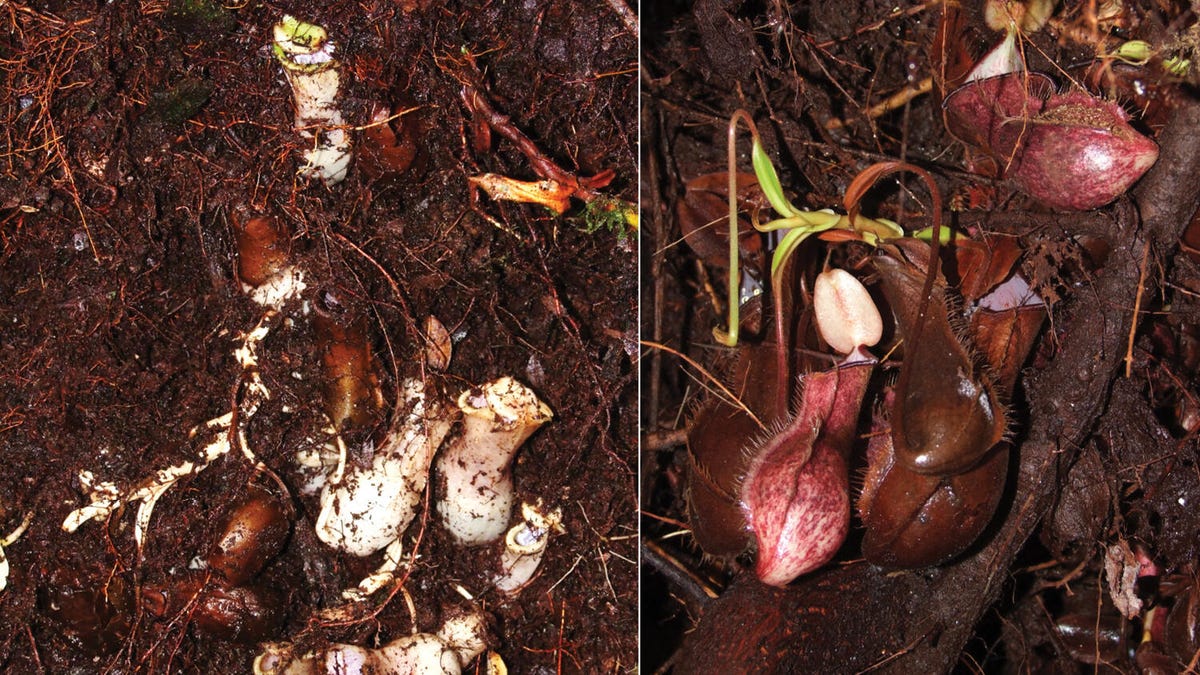This Bizarre Carnivorous Plant Captures Prey Underground
The unusual pitcher plant has a thing for subterranean snacks.
Venus flytraps and other insect-eating plants show just how wild botany can be. A newly described species of pitcher plant from the island of Borneo is shaking up what scientists know about carnivorous plants.
Like others of its kind, Nepenthes pudica has leaves shaped like pitchers that catch unsuspecting prey, including beetles and ants. What's different is where it does its dining.
"In a strategy so far unknown from any other species of carnivorous plant with pitfall traps, this one operates underground, catching its prey in the soil," said Pensoft Publishers in a statement on Wednesday. A team led by researchers at Palacky University in the Czech Republic published a paper on the plant in the Pensoft journal PhytoKeys last week.
Nepenthes pudica grows its pitchers in underground cavities.
The pitchers work as lures, enticing insects to the edge where they fall in and are then digested to feed the plant.
The scientists originally spotted the plants in 2012 thinking they were missing their pitchers, but a chance disturbance of moss around a tree base revealed the hidden parts. A search turned up other specimens, all with the same underground habits.
The plant's unusual growth patterns may be due to its location on dry ridge tops. "We hypothesize that underground cavities have more stable environmental conditions, including humidity, and there is presumably also more potential prey during dry periods," said study co-author Michal Golos from the University of Bristol.
The researchers haven't revealed the plants' exact locations in order to prevent poaching. They hope the plant will raise awareness of habitat loss as Bornean rainforests are turned into oil palm plantations. Said study co-author Wewin Tjiasmanto, "This discovery is important for nature conservation in Indonesian Borneo, as it emphasizes its significance as a world biodiversity hotspot."


